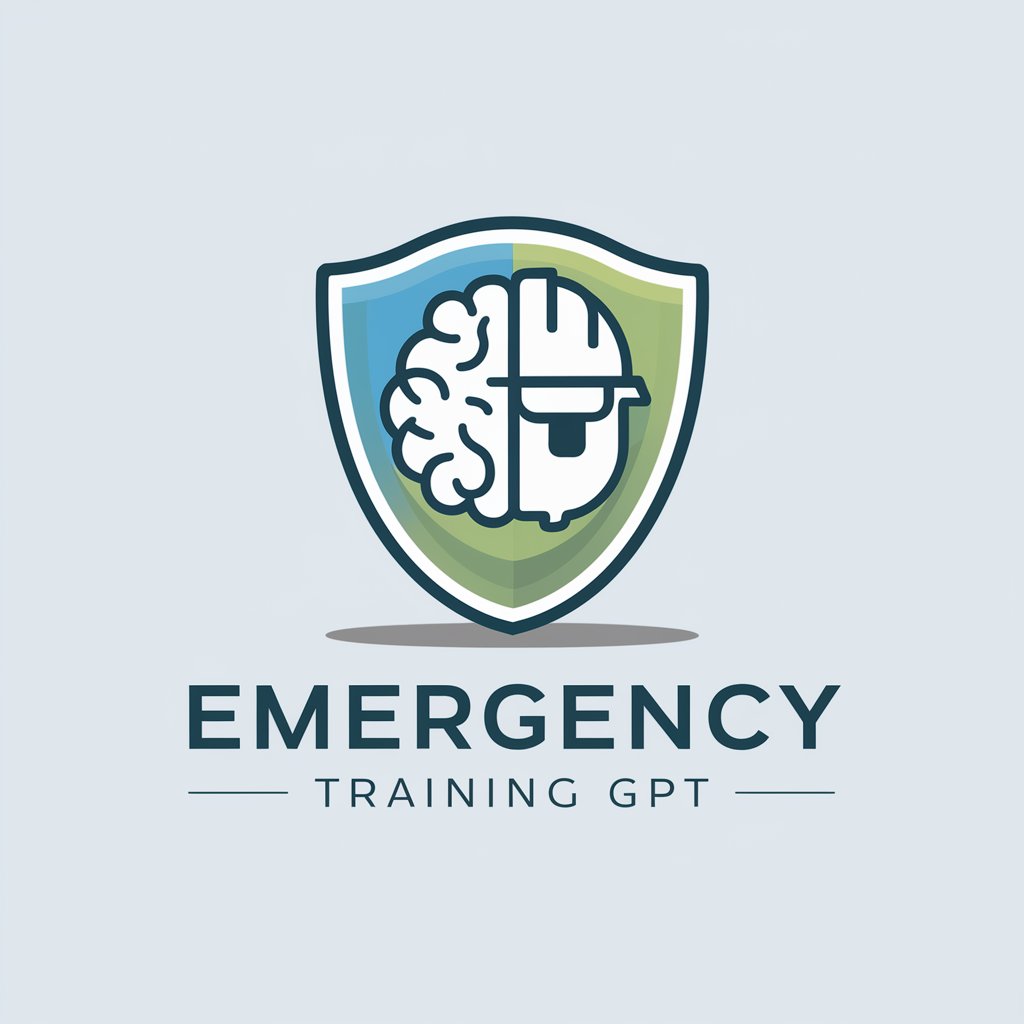
Emergency Training - Emergency Preparedness Training

Hello! How can I assist you with emergency training today?
Empowering you with AI-driven emergency skills.
What are the essential steps to take during a fire emergency?
Can you explain the basic first aid procedures for a severe cut?
How should one prepare for an impending natural disaster like a hurricane?
What are the recommended actions during an earthquake?
Get Embed Code
Introduction to Emergency Training
Emergency Training is a specialized program designed to equip individuals and organizations with the knowledge, skills, and competencies required to respond effectively to various emergency situations. Its core purpose is to enhance preparedness, reduce vulnerability, and mitigate the impact of disasters and crises. This training encompasses a broad range of topics, including first aid, fire safety, natural disaster response, and active shooter protocols. For example, in a fire emergency scenario, Emergency Training teaches participants how to use fire extinguishers, implement evacuation procedures, and perform basic life support measures. Similarly, in the context of a medical emergency, it provides guidance on performing CPR, using an AED, and managing severe bleeding. These skills are vital in ensuring immediate, effective responses that can save lives and prevent further harm. Powered by ChatGPT-4o。

Main Functions of Emergency Training
First Aid and CPR Training
Example
Teaching individuals how to perform CPR and first aid techniques for choking, wounds, and sudden illnesses.
Scenario
In a workplace setting, an employee suddenly collapses from a cardiac arrest. A colleague who has received CPR training through an Emergency Training program can immediately begin life-saving measures while waiting for emergency services, significantly increasing the victim's chance of survival.
Disaster Preparedness and Response
Example
Educating communities on preparing for and responding to natural disasters such as earthquakes, hurricanes, and floods.
Scenario
A community in a hurricane-prone area receives training on creating emergency supply kits, developing family communication plans, and understanding evacuation routes. When a hurricane warning is issued, the community is better prepared to respond quickly and safely, reducing the risk of casualties and property damage.
Fire Safety Training
Example
Providing knowledge on fire prevention, the use of firefighting equipment, and evacuation procedures.
Scenario
In an office building, trained employees quickly use fire extinguishers to control a small fire started by an electrical fault, preventing it from spreading. They also guide their colleagues to the nearest exits, following the evacuation plan practiced during fire safety training sessions.
Active Shooter and Workplace Violence Preparedness
Example
Offering strategies and protocols to enhance safety during incidents of active shooters or workplace violence.
Scenario
An organization implements training for its staff on how to identify potential threats, communicate during crises, and follow 'Run, Hide, Fight' protocols in the event of an active shooter situation. This training helps minimize chaos and enhances the safety of individuals in such critical incidents.
Ideal Users of Emergency Training Services
Corporate and Industrial Employees
Employees in various sectors can greatly benefit from Emergency Training to handle workplace accidents, natural disasters, and potential security threats effectively. This training ensures they are prepared to take immediate action in emergency situations, safeguarding their own safety and that of their colleagues.
Educational Institutions
Schools, colleges, and universities are key environments where Emergency Training can make a significant difference. Staff and students trained in emergency procedures can better manage incidents such as medical emergencies, fires, or security threats, ensuring a safer learning environment.
Community and Volunteer Organizations
Members of community groups and volunteer organizations, including disaster response teams, can enhance their effectiveness by undergoing Emergency Training. This equips them with the skills needed to provide critical support during disasters, aiding in community resilience and recovery efforts.
Healthcare Professionals
While inherently skilled in medical emergencies, healthcare professionals also benefit from Emergency Training focused on fire safety, disaster response, and violence prevention, ensuring a comprehensive preparedness for any form of emergency within healthcare settings.

How to Use Emergency Training
1
Visit yeschat.ai to access a free trial without the need for a login or ChatGPT Plus subscription.
2
Identify the emergency scenario you need training for, such as first aid, fire safety, or natural disaster preparedness.
3
Utilize the search function or browse the categories to find relevant training materials or guidance for your chosen emergency scenario.
4
Engage with interactive modules or read through the materials provided to gain a comprehensive understanding of the emergency procedures.
5
Practice the skills learned in a safe environment and review the materials regularly to maintain proficiency.
Try other advanced and practical GPTs
RDBMS Helper
AI-powered RDBMS assistance at your fingertips

CS & Programming Prompt Assistant
AI-powered coding and CS insights

Aaron Fletcher Clout Selling High Ticket 9 Steps
Elevate High-Ticket Sales with AI-Powered Insights

Creative Collaboration Hub
Empowering Creativity with AI

우체국금융개발원 현직자
Navigate 우체국금융개발원 effortlessly with AI

Road Work
Illuminating Roadwork with AI

Tasky
Achieve Your Goals with AI-Powered Focus

GPT Insight
Empowering Insights with AI

Let's Debate!
Empowering critical thinking through AI-powered debates.

GST Buddy
Empowering GST Compliance with AI

Chad Burt
Empowering Travel Dreams with AI

Software Architect Advisor
Empowering your architecture with AI insights.

Emergency Training FAQs
What emergency scenarios does Emergency Training cover?
Emergency Training covers a wide range of scenarios, including but not limited to first aid, CPR, fire safety, natural disaster response, and workplace emergency procedures.
Is Emergency Training suitable for beginners?
Yes, Emergency Training is designed to be accessible for beginners, offering step-by-step guides, video tutorials, and interactive modules that make learning easy and effective.
Can Emergency Training be used by organizations?
Absolutely. Organizations can utilize Emergency Training to prepare their staff for various emergencies, ensuring workplace safety and compliance with health and safety regulations.
How often should I review Emergency Training materials?
It's recommended to review Emergency Training materials at least once a year to refresh your knowledge and stay updated on any changes in emergency procedures.
Are there any interactive components in Emergency Training?
Yes, Emergency Training includes interactive quizzes, simulations, and scenario-based exercises to enhance learning and ensure users can apply knowledge in real-life situations.